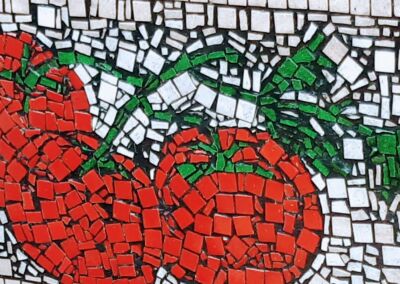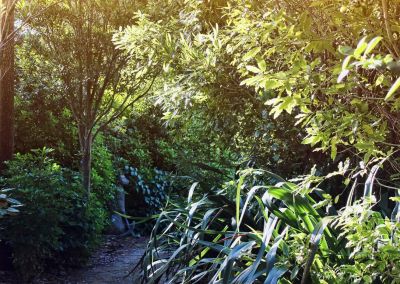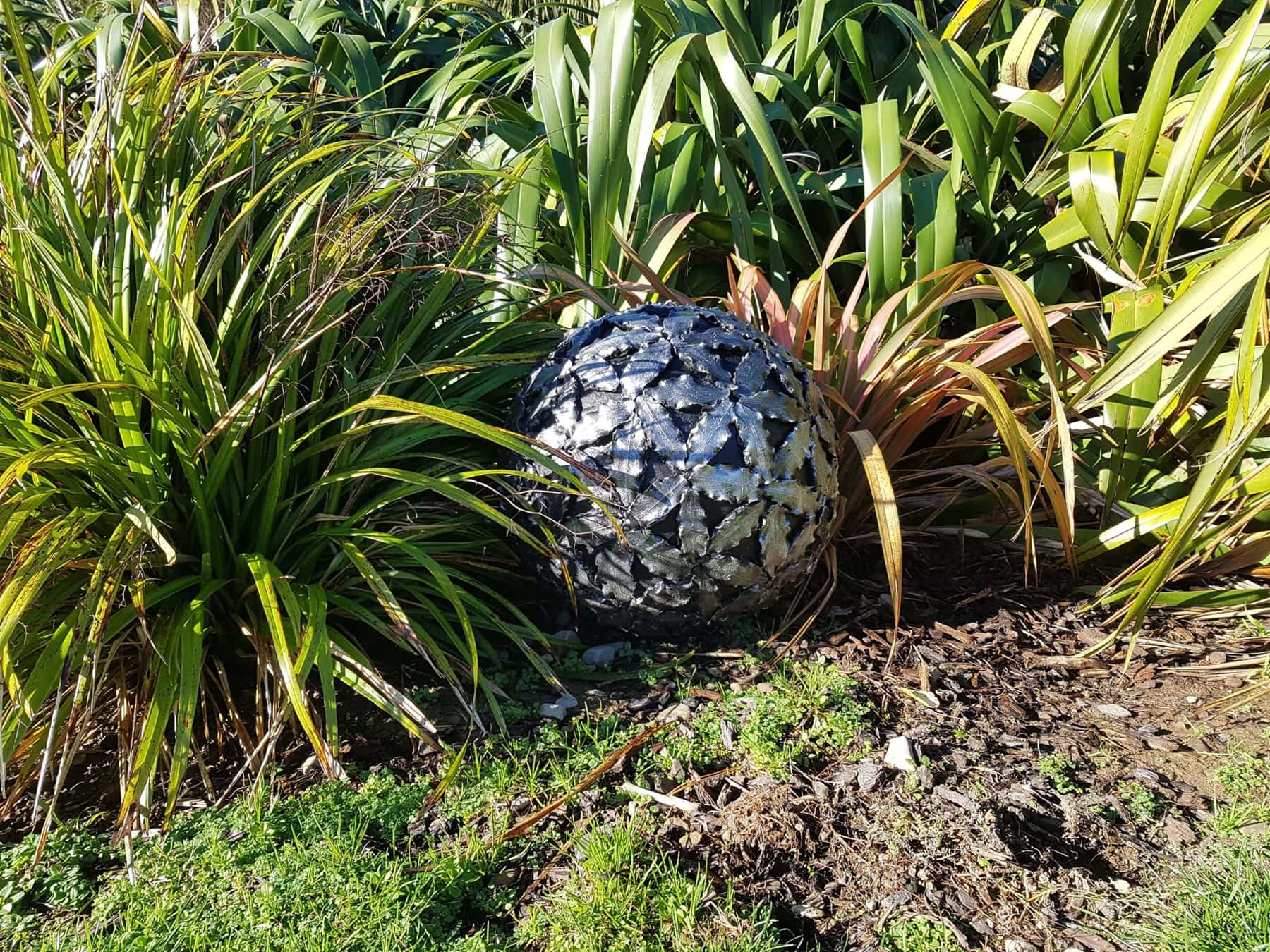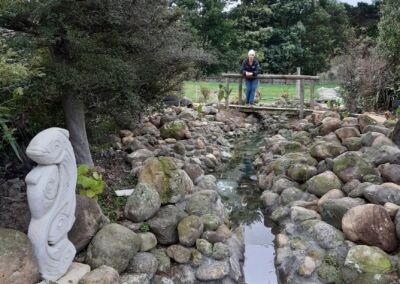Hattenburn 2020
This rural Carterton garden beneath the Tararuas benefits from a high annual rainfall and has to stand up to strong winds. Over 15 years, the owners have transformed a bare paddock into a lush oasis of native bush. Well-established second canopy species of beech, lancewood, miro and ti kouka now provide shelter and a safe haven for tui, bellbirds and kererū.
Dotted throughout–sometimes hiding round a corner, or perched high on a hill, you’ll see Malcolm’s art figures and Anna-Marie’s mosaic sculptures. Art is everywhere at Hattenburn and is one of Anna-Marie’s greatest joys in the garden, along with working towards a self-sufficient way of life. Almost all of the family’s fruit and vegetables come from their raised edible gardens.
CARTERTON





In the recycled window greenhouse hügelkultur is used (hill culture or mound) to build soil fertility, and retain moisture. Naturally felled rotting wood is mixed with soil to create a nutrient rich, carbon dense environment, perfect for growing edibles.
A hot garden next to the greenhouse, has been developed since the 2018 tour. The hot garden is Malcolm’s design and combines heat releasing brick pavers, and a curved concrete wall (with a cavity of empty glass bottles to trap and release warm air) that hugs the frost tender tamarillo and avoacados.
Read More
pot and a suction force is created between the soil moisture and plant roots.
A second bottle wall will be finished in time for November. You’ll find it bordering the vegetable garden. Both walls are painted black – the best colour to absorb the sun’s heat. Anna estimates the finished wall will have around 15,000 wine and beer bottles inside the cavity – many were donated by Cartertonians during lockdown. Another lock-down project was a fishpond created from a natural spring. Though the channel has been carved out and lined with river rocks, the water source is natural; and rainfall sets the water levels and flow. The constant movement and sound of water is soothing and is a new tranquil addition to the garden.
Allow at least an hour to tour the full two acres of garden. Anna enjoys sharing stories of Hattenburn’s journey with info signs she displays in the garden on tour weekend. It’s a garden to linger in and learn from. Paths are paved with lime, with lots of seating throughout. BYO picnics are welcome and cream teas will be available to purchase, along with plants grown on the property, and a selection of Anna’s garden art.











